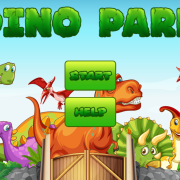Plate Tectonics | Game Online
Unraveling Earth's Majestic Mysteries: A Deep Dive into Convergent Boundaries of Plate Tectonics
In the grand, unfathomable dance that shapes our planet, plate tectonics stands as a mesmerizing spectacle, its movements dictating the very topography we tread upon. Today, let's delve into one such captivating aspect – convergent boundaries, where plates collide and reshape Earth in awe-inspiring ways.
Understanding Plate Tectonics
Plate tectonics is the large-scale movement of Earth's lithosphere—the rigid, outermost layer that includes the crust and the uppermost mantle—over time. This movement occurs due to the convective activity within the planet's mantle, which pushes tectonic plates around like pieces on a gigantic puzzle.
The Convergent Boundaries: Where Worlds Collide
Convergent boundaries are one of three types of plate margins, along with divergent and transform boundaries. At these boundaries, tectonic plates converge and either collide or subduct (one plate forced beneath another), giving rise to spectacular geological events like mountain ranges and volcanic activity.
Collision of Plates
When two continental plates collide, the outcome is a colossal uplift resulting in mighty mountain ranges such as the Himalayas or the Andes. As the continents grind together, they buckle and fold, pushing up the Earth's crust to create these towering peaks.
Subduction Zones
At convergent boundaries where one plate collides with an oceanic plate, the denser oceanic plate sinks beneath the continental plate in a process known as subduction. Subduction zones are home to some of Earth's most active volcanoes, like those found along the Pacific "Ring of Fire."
Earthquakes and Volcanism: A Symphony of Destruction and Creation
The movements at convergent boundaries often trigger powerful earthquakes, resulting from the immense pressure built up between colliding plates. Meanwhile, volcanic activity, particularly in subduction zones, is a testament to the intense heat generated during plate subduction. These eruptions spew forth molten rock and ash, contributing to land formation and reshaping the planet's surface.
The Wonders of Convergent Boundaries
From the towering peaks of the Himalayas to the fiery landscapes of subduction zones, convergent boundaries have shaped Earth into its stunningly diverse tapestry. These sites offer not only breathtaking sceneries but also serve as laboratories for scientists seeking to uncover the secrets hidden beneath our feet.
In conclusion, understanding plate tectonics and its different types of boundaries, especially convergent boundaries, provides a fascinating window into Earth's ever-changing landscape. As we continue to explore and decipher the intricate dance of plates, we gain valuable insights into the forces that have shaped our planet and will continue to do so in the future.








